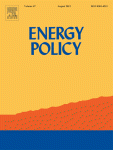Sandia researchers conducted a parametric analysis to examine the supply demand interactions between the US light-duty vehicle (LDV) fleet, its fuels, and the corresponding primary energy sources through 2050. The analysis emphasizes competition between conventional internal combustion engine (ICE) vehicles, including hybrids, and electric vehicles (EVs), represented by both plug-in hybrid and battery electric vehicles. The study found that EV market penetration could double with policies to extend consumers’ effective payback period to 7 years. However, EVs have limited ability to reduce LDV greenhouse gas (GHG) emissions with the current energy source mix. Alone, EVs cannot drive compliance with the most aggressive GHG emission reduction targets, even if the electricity grid shifts towards natural gas-powered sources. Since ICEs will dominate the LDV fleet for up to 40 years, conventional vehicle efficiency improvements have the greatest potential for reductions in LDV GHG emissions and petroleum consumption over this time. This conclusion seems robust even if global oil prices rise to two to three times current projections.
Check out the full article at: http://www.sciencedirect.com/science/article/pii/S0301421512003138
